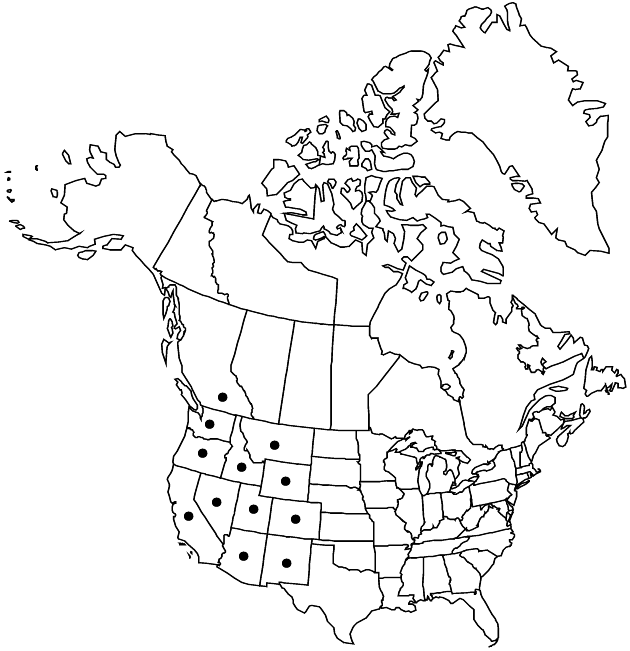Difference between revisions of "Brickellia oblongifolia"
Trans Amer. Philos. Soc., n. s. 7: 288. 1840.
FNA>Volume Importer |
FNA>Volume Importer |
||
| Line 55: | Line 55: | ||
|publication year=1840 | |publication year=1840 | ||
|special status= | |special status= | ||
| − | |source xml=https://jpend@bitbucket.org/aafc-mbb/fna-data-curation.git/src/ | + | |source xml=https://jpend@bitbucket.org/aafc-mbb/fna-data-curation.git/src/8f726806613d60c220dc4493de13607dd3150896/coarse_grained_fna_xml/V19-20-21/V21_1282.xml |
|tribe=Asteraceae tribe Eupatorieae | |tribe=Asteraceae tribe Eupatorieae | ||
|genus=Brickellia | |genus=Brickellia | ||
Revision as of 16:31, 18 September 2019
Perennials or subshrubs, 10–60 cm (caudices woody). Stems branched, stipitate-glandular to glandular-pubescent. Leaves mostly alternate (sometimes subopposite); petioles 0; blades obscurely 3-nerved from bases, elliptic, lance-linear, or oblong, 9–40 × 1–15 mm, bases acute to attenuate, margins entire, apices acute or obtuse, faces pubescent to villous, often stipitate-glandular. Heads borne singly or in corymbiform arrays. Peduncles 2–50 mm, glandular-pubescent. Involucres cylindric to campanulate, 10–20 mm. Phyllaries 25–35 in 4–6 series, greenish, 4–5-striate, unequal, margins scarious (sometimes ciliate, apices acute to acuminate); outer ovate to lanceolate (gland-dotted to glandular-puberulent), inner linear-lanceolate to linear (glabrous). Florets 25–50; corollas pale yellow-green or cream, often purple-tinged, 5–10 mm. Cypselae 3–7 mm, stipitate-glandular or hispidulous; pappi of 18–25 white, barbellate to subplumose bristles.
Distribution

w North America.
Discussion
Varieties 2 (2 in the flora).
Selected References
None.
Key
| 1 | Cypselae usually stipitate-glandular, sometimeshispidulous | Brickellia oblongifolia var. oblongifolia |
| 1 | Cypselae setose-hispidulous, mostly lacking glands | Brickellia oblongifolia var. linifolia |